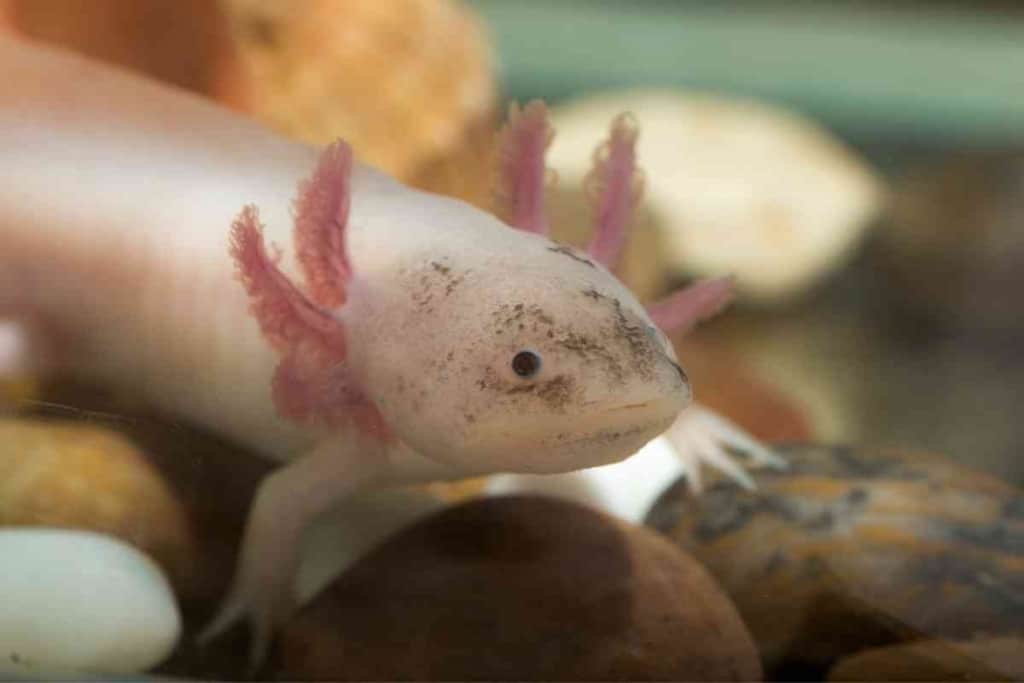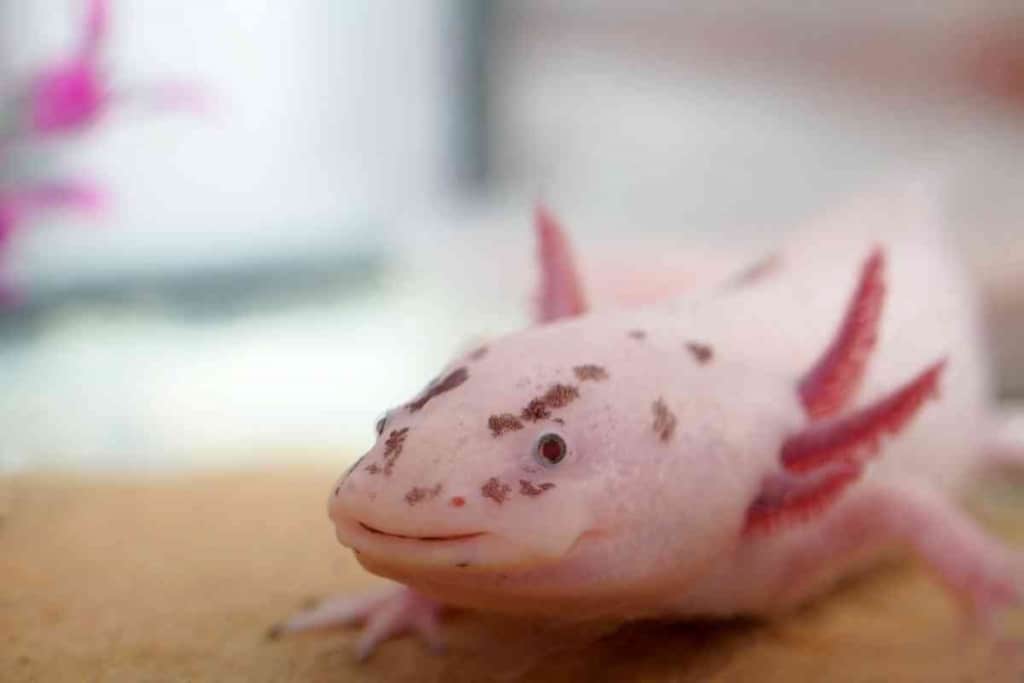Why Do Axolotls Flap Their Gills? And What It Means!
Are you a new pet parent wondering why axolotls flap their gills and what it means, this post is for you.
Petting an axolotl makes an excellent experience. The unique member of the amphibian family spends their lives in water, and it is certainly a pleasure to look at them while they flip and flap their gills. However, many new pet parents often ask why axolotls flap their gills and what it means.
Why Do Axolotls Flap Their Gills?
Flapping gills is a normal activity by an axolotl which allows you to get more oxygen. However, when an axolotl excessively flaps its gills, it may be an indication of stress, and your pet may be struggling to breathe. In that case, be sure to add an air pump and get in touch with a vet.
Axolotls make a great pet. They are cute, hardy, and easy to take care of. It is true entertainment to watch axolotls in the water, making it an exotic pet for people of all ages. And while axolotls are becoming increasingly popular, many beginners who have recently gotten an axolotl as pets are concerned about why they flap their gills and what it means.
In what follows, we take a closer look at this behavior of an axolotl and what it means when you observe your axolotl flap its gills.
As a bunch of axolotl lovers who love to have these tiny crawling pets of all ages, we are well aware of certain behaviors that these cute little creatures exhibit, so we can explain well why do axolotls flap their gills and what it means.
Why Do Axolotls Flap Their Gills?

If you are a new pet owner and are wondering why axolotls flap their gills, know that they do so to get more oxygen. When axolotls flap their gills, they get access to fresh water, which brings along the oxygen they need.
In most cases, when you observe your axolotls flapping their gills, know that there is nothing to worry about, and you can think of gill flapping as a pretty normal behavior exhibited by axolotls when they need more oxygen from their environment.
What Does it Mean When Axolotlts Flap Their Gills?
The flapping of gills can be considered a very normal behavior by axolotls. When an axolotl flaps its gills, it means your pet is trying to take in more oxygen which is a kind of lazy behavior performed by the axolotls.
Instead of moving their entire bodies to get more oxygen, axolotls rely on flapping their gills to get more oxygen. It is common for axolotls to flap their gills at an interval of 5-6 seconds on average.
The movement is useful as the turbulence in water produced by the flapping of gills provides more oxygen in the tank.
However, if you observe your axolotls flapping their gills excessive, frequently or rapidly (at short intervals of 1-2 seconds), it could be an indication that your pet is struggling to get oxygen. Moreover, it could also be an indication that your pet is in discomfort and pain or is experiencing compromised gill function.
Furthermore, the excessive flapping of the gills may also indicate gill irritation or inflammation or other serious health concern.
Why Is My Axolotl Excessively Flapping the Gills?
In most cases, gill flapping is considered a normal behavior and occurs when the axolotls try to get more oxygen through the water.
However, what does it mean when your axolotl flaps its gills excessively? The excessive gill flapping by axolotls could be an indication that your pet is not getting enough oxygen. While it is normal for axolotls to exhibit this behavior, excessive flapping could indicate that there is some serious issue with the tank
In that case, you need to ensure that you regularly add clean and fresh water to the tank and that your air pump is working effectively.
If you don’t have a battery-powered air pump in your tank yet, maybe it’s a good time to add one to your tank to ensure that your axolotls get an ample supply of oxygen.
Moreover, apart from providing enough oxygen, you should also check your pet’s body language. If the axolotl is flapping excessively, but its body seems to be relaxed and fine, then there is nothing to worry about.
However, if you notice your axolotl struggling in water or stressed, make sure you provide for ample oxygen. If the behavior persists, it is a good idea to get your axolotl to get checked by a veterinarian.
Understanding the Axolotl’s Gills Flapping Movement

Axolotls flap their gills to get more oxygen from their bodies. When they flap their gills, they create movement in the water tank, which shifts the water and dissolved air in the tank. The movement in the water hence allows axolotls to get more oxygen from the water without moving their entire bodies.
So while it may seem like a cute action, it is, in fact, a lazy behavior that almost all axolotls exhibit to get more oxygen for their bodies.
How Do I Know If My Axolotl Is Stressed?
If your axolotls are flapping excessively, it is an indication that they are struggling to get more oxygen. In that case, you should check your pet for showing signs of stress. An axolotl that is stressed is likely to be more stagnant and lethargic.
Moreover, you will notice that its gills are curled forward, which is a classic indication that your pet’s body is stressed. If lack of oxygen in the water tank is a source of stress, adding fresh water to the tank or placing an air pump into the tank should improve your pet’s condition.
However, if your pet’s body is persistently stressed out even when you provide sources of more oxygen, and you notice signs of stress such as forward curled gills and lack of movement and appetite, it’s best to schedule a consultation with your vet to determine the exact cause of stress for your pet.
Why Is My Axolotl Thrashing Around?
Another behavior that may be exhibited by your pet as a sign of discomfort is thrashing. You may notice your pet thrashing as a result of several health concerns, including irritation or injury of the gills or problems with digestion.
It is important to recognize any unusual behavior by your pet, including thrashing, and take advice from the vet accordingly because different axolotls exhibit different types of behaviors due to several reasons, and there is no definite answer.
Why Do Axolotls Gills Curl Forward?
When you notice your axolotls curling their gills forward, it is a clear indication that your pet’s body is stressed. The pet can experience stress due to several reasons; however, all these reasons are specific to the environment in which your pet is living.
As soon as you notice your axolotl’s stressed gills, you should assess all environmental factors, including the tank water, the air pump, the tank’s population, tank plants, and temperature, and make changes as required. If you still notice that your axolotls’ gills are curled forward, make sure you schedule a visit to your bet, as it could also be an indication of an underlying health condition.
